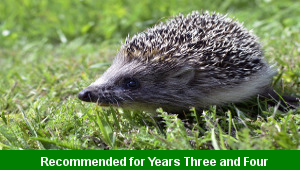Lesson Five – Character Dialogue

This English teaching pack for Key Stage Two gets the children to illustrate how to write and punctuate dialogue sentences to show what different characters might have said in a narrative story about whales.
The class can select and record predictions as to how the narrative structure might further develop after the story’s ending.
Download this teaching pack including a lesson plan, classroom activities and an interactive presentation to teach the children to illustrate how to write and punctuate dialogue sentences to show what different characters might have said in a narrative story about whales
Activities in this teaching pack include a template to record how to write and punctuate dialogue sentences to show what different characters might have said in a story about whales to indicate their actions and feelings in a selection of narrative scenes.
The interactive presentation gets the children to explore how to punctuate dialogue sentences to show what different characters might have said in a story about whales.
This lesson is part of an English scheme of work to get the children to explore how authors use dialogue to illustrate the actions and thoughts of story characters and narrate plot events. There are teaching activities for shared learning, differentiated worksheets to support independent learning and interactive presentations to introduce concepts and key skills.
-

Rounding Hundreds
Explain and model how to round some different numbers to the nearest hundred based on the place values of the digits in each number
-

Rounding Tens
Identify and record how to round some different numbers to the nearest ten based on the place values of the digits in each number
-

Classic Animal Stories
Investigate the structure and content of classic works of fiction by significant authors with animals as the main characters
-

Cities, Towns and Villages
Research and present the history of a range of different buildings and people that are part of the local community using a school exhibition
